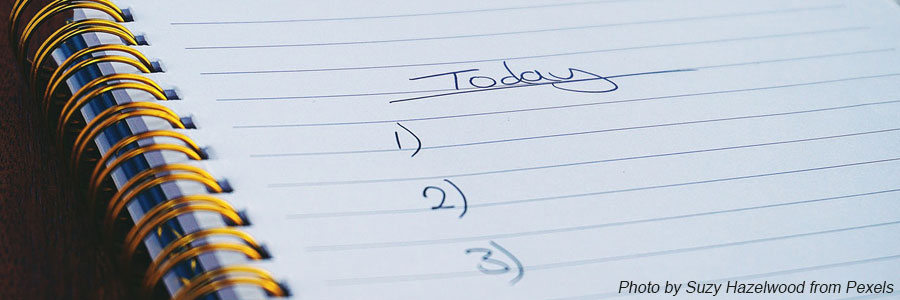As COVID continues to threaten our health physically, the call for quarantining and social distancing may prove equally detrimental to our mental health. Even perennial optimists may find it difficult to put on a happy face day-after-day, week-after-week, and month-after-month in this altered reality.
For good measure, I decided to read David Burns’ Feeling Good: The New Mood Therapy and see what he had to say about warding off the blues. (And he has a lot to say!) The book is chalk full of content about the nature of depression, the tools that can be used to combat it, and the clinical research that demonstrates the effectiveness of Burns’ methodologies. My Achilles Heels are “do-nothing-ism” and its twin, procrastination.
I’ll confess that I’ve done a whole lot more binge-watching on television that I can ever remember in my entire lifetime. Of course, I’ve never logged so many hours in Home Sweet Home as I have over the past 9+ months. Yet even with a full complement of high quality viewing options, I find that I feel rather low when I’ve spent too much time in front of the tube… even when pursuing other activities concurrently. It makes me feel like I’m stagnating, and that’s not a concession to COVID that I’m willing to make.
Burns suggest that I create a Daily Activity Schedule with the following elements:
- A prospective hour-by-hour plan for how I’m going to spend my day
- A notation as to whether each activity relates to mastery (M) or pleasure (P)
- A rating (1-5) of the difficulty of the activity
- A retrospective look at what I actually did
A journal kept faithfully will help me become aware of how I spend my time (which may prove startling!) It provides the opportunity to balance work, personal development, play, and connection. It creates structure to motivate action in the present and provide opportunities for continuous improvement in the future. And Burns claims that laying out and adhering to plan lifts mood.
To address procrastination, Burns asks that I list all of the tasks that I’ve been putting off. He suggests that I give them ratings of how difficult I think it will be to complete each one, and how satisfying it will feel to cross them off the list. Once they’ve been added to my Daily Activity Schedule and completed, he then recommends returning to those predictions to see how the actual experience compared to the predicted one. I may find that I’ve overestimated the level of difficulty and underestimated the reward (or relief!) Again, his research shows that productivity and self-confidence tend to go up when following this simple program.
For larger “to dos,” Burns advocates the tried-and-true method of breaking larger projects into manageable tasks. This strategy combats the tendency to feel overwhelmed and provides milestones at which one can celebrate victories and note progress toward goals. For peace of mind, it may even make sense to simply say, “I’m going to work on this task for X hours today and then put it away.” It alleviates the pressure to make sweeping progress and lets the mind and body know when it’s time for a break. (My husband used this approach to good effect when we moved a dump truck full of fresh fir bark from the driveway to the back yard. He never despaired of how much was left to do; he simply focused on ending each day’s activity with a “cold one” and a good meal.)
While I’m generally not big on using these types of tools, I’m willing to give them a go as I start the new year. I’m quite likely to spend several more months in quarantine, and I’d really like to have something to show for it other than heightened familiarity with Netflix and Amazon Prime series. I’ve got a pretty good start on my “procrastination list,” and several burgeoning file folders with paperwork that requires review and/or action. Let’s see how much momentum I can build for plowing through it all. Of course, I may decide that some things just aren’t worth my time and attention… and that’s OK!
